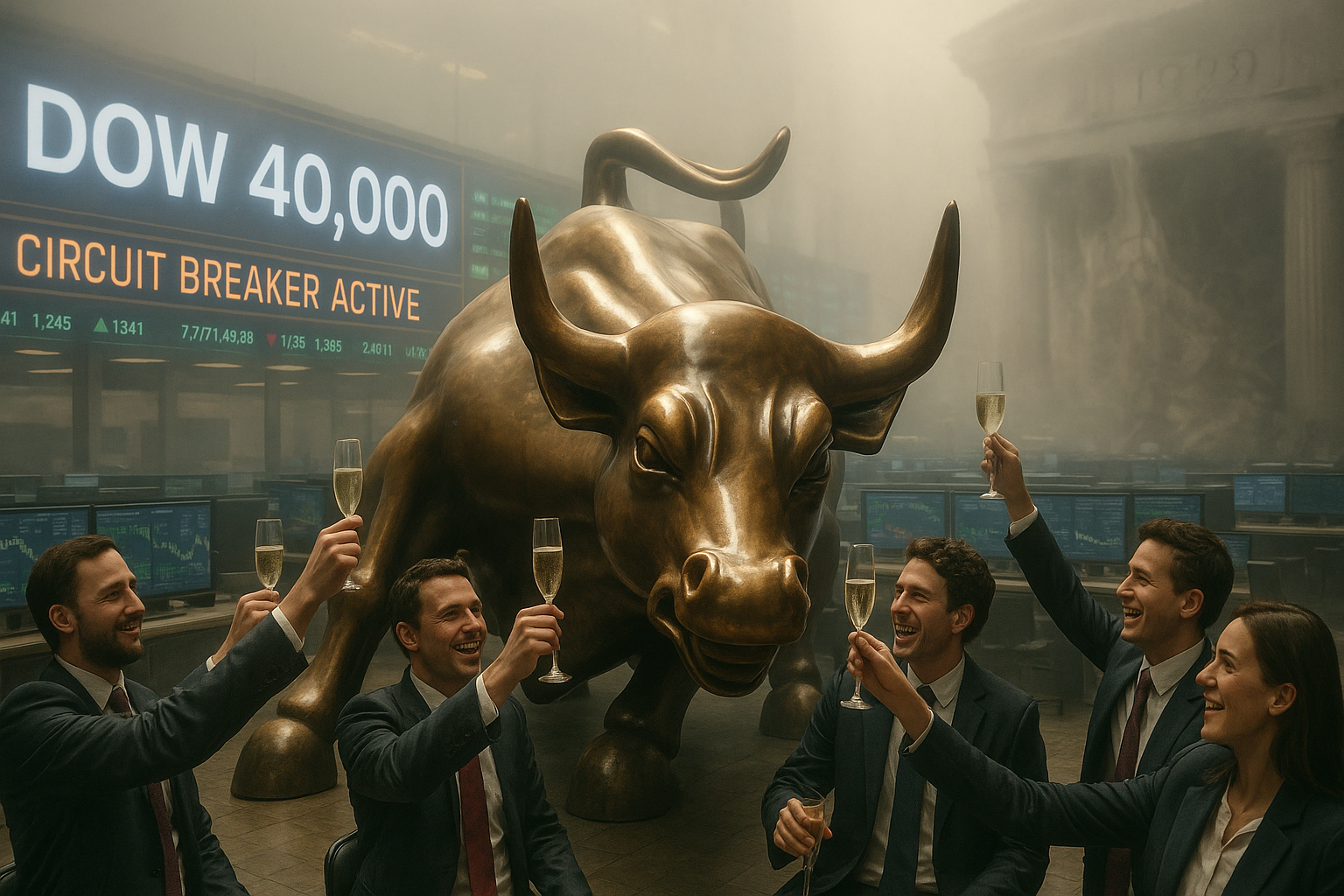Andrew Ross Sorkin thinks we should be worried about history rhyming. I'm not so sure.
The markets are soaring, champagne corks are popping, and yet... a strange economic anxiety hangs in the American air like morning fog that refuses to burn off. The Dow just crossed 40,000—popping that psychological barrier with barely a pause for breath—while ordinary Americans still fret about grocery bills and housing costs.
Sound familiar? It should.
This tension between market exuberance and Main Street malaise sits at the heart of Sorkin's new book examining the 1929 crash, a work that couldn't arrive at a more appropriate moment. The parallels he draws deserve serious consideration.
Today's market shows undeniable pockets of speculative excess. (Have you seen what AI stocks are trading at? Numbers that would make even the most cocaine-addled 1990s dot-com analyst blush with embarrassment.) We've cultivated a wealth gap that makes the Gilded Age look downright egalitarian by comparison. Our financial regulatory system perpetually seems three innovations behind whatever Wall Street just cooked up.
But here's where the 1929 comparisons fall apart.
The entire architecture of modern markets—every safety valve, circuit breaker, and regulatory guardrail—was specifically engineered to prevent another 1929-style collapse. We've essentially built an elaborate anti-1929 machine.
Think about it. We have trading halts that kick in when markets drop too quickly. We have a Federal Reserve that actually understands its role as lender of last resort (though their inflation-fighting credentials remain... questionable). We have deposit insurance that prevents bank runs. We have sophisticated market makers who, despite occasionally causing their own peculiar problems, generally maintain liquidity when things get dicey.
The 1929 crash wasn't just a bad day for stockholders. It was a systemic revelation that the entire financial apparatus was built on matchsticks, wishful thinking, and bourbon-soaked handshake deals. Banks failed in cascades. Credit markets froze solid. A third of Americans lost their jobs. People literally starved.
Look, I get the anxiety. Today's rally has been concentrated in a handful of tech behemoths in a way that makes the whole thing feel narrower and therefore more fragile. The upcoming presidential election features two candidates who each, in their own special ways, make investors reach for the Maalox.
But here's what's fundamentally different: In 1929, almost nobody conceived of systemic risk. The idea that markets could simply cease functioning wasn't part of anyone's mental model.
Today? Systemic risk is all we think about. Fed governors have nightmares about financial contagion. Risk officers at major banks run stress tests before their morning coffee. Hedge fund managers keep contingency plans for market breaks like suburban dads hoarding emergency supplies.
We worry about everything now. And that worry—institutionalized, systematized, and built into market plumbing—is precisely what makes a repeat of 1929 unlikely.
That said...
Our obsessive preparation for the last crisis virtually guarantees we'll be blindsided by something entirely new. The next meltdown won't look like 1929, 2008, or 2020. It'll be something novel that makes everyone slap their foreheads and mutter, "How did we miss THAT?"
Maybe it's cascading sovereign defaults triggered by debt levels that seemed sustainable until, suddenly, they weren't. Perhaps a cybersecurity catastrophe paralyzes critical financial infrastructure. Or something crypto-related that makes us all wish we'd never learned the word "blockchain."
Or—and this seems increasingly possible—the market might just grind steadily higher for years, making cash-hoarders look foolish while inflation silently eats away purchasing power until those nominal gains reveal themselves as hollow victories.
Having covered financial markets for years, I've noticed how they evolve specifically to route around previous failures. They're adaptive systems, constantly changing in response to the last disaster. Worrying about a 1929-style crash in 2024 is like a modern military preparing exclusively for trench warfare. The battlefield has fundamentally changed.
So while Sorkin's historical perspective offers valuable lessons (and I'll certainly read the book), we might be better served looking forward rather than backward.
History doesn't repeat itself exactly—but it sure does charge a hefty convenience fee for those who fail to at least skim the CliffsNotes version.
In the meantime... maybe keep some cash on hand. Just in case.
